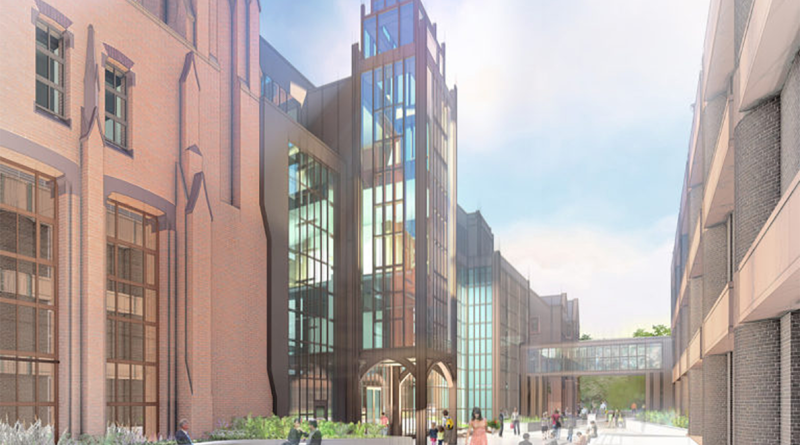Grand Reopening of Yale Peabody Museum’s Mineralogy Galleries
The Yale Peabody Museum celebrated the grand reopening of its Mineralogy Galleries, marking the culmination of a transformative renovation project. This significant event showcases the stunning array of mineral specimens from the prestigious collection of David Friend, a renowned private mineral collector. Known for its breadth and beauty, the David Friend Collection has added unparalleled value to the museum, offering visitors a chance to witness some of the world’s most extraordinary minerals for the first time.
The reopening not only highlights the museum’s enhanced aesthetic and educational offerings but also underscores its commitment to making natural history accessible to a broader audience. With the elimination of admission fees, the museum invites visitors from all backgrounds to explore its treasures.
The Renovation: A New Era for the Museum
The comprehensive renovation of the Yale Peabody Museum was made possible by a landmark $160 million gift from philanthropist Edward P. Bass, along with contributions from other generous donors. Designed by Centerbrook Architects and Planners, the renovation expanded the museum’s exhibition space by over 50%, adding new galleries, research spaces, and classrooms equipped with the latest technology. The revamped museum now features brighter and more accessible exhibits, aiming to engage and inspire visitors from the moment they walk through its doors.
David Skelly, Director of the Yale Peabody Museum, emphasized the transformative impact of the renovation: “This project has not only enhanced our physical space but has also enriched our ability to educate and inspire. By removing the barrier of an admission fee, we are welcoming a broader audience to explore and appreciate our collections”.
The renovation project, which began in 2018, included the construction of a new central gallery, additional classrooms, and advanced facilities for research and education. This ambitious undertaking has created a dynamic environment for both visitors and scholars, fostering a deeper understanding of natural history.
Highlights of the David Friend Collection
The centerpiece of the new mineralogy galleries is the David Friend Hall, dedicated to showcasing the finest specimens from Friend’s collection. Among the 500 specimens on display are dazzling examples of native gold, brilliant fluorites, and an array of exquisite quartz crystals. The collection, praised for its rarity and beauty, provides visitors with a comprehensive look at mineralogy and the critical role of minerals in our world.
Philanthropist David Friend envisioned a gallery designed to inspire awe rather than lecture. “I want visitors to leave overwhelmed by the beauty of what they have seen and anxious to learn more or even start collecting minerals themselves,” said Friend. The exhibits are subtly lit to highlight the specimens, ensuring an immersive and visually stunning experience.
In addition to Friend’s collection, the galleries feature contributions from other notable donors and collections, including rare specimens loaned by the Yampol Family and The Mineral Trust. These additions enrich the museum’s offerings and provide visitors with a diverse and captivating exploration of the mineral world.
Educational and Scientific Impact
The newly renovated galleries significantly enhance the educational opportunities available at the Yale Peabody Museum. With expanded classroom space and state-of-the-art technology, the museum now offers more interactive and hands-on learning experiences for students of all ages. The new education center, dedicated to K-12 programs, ensures that young visitors from the New Haven area and beyond can engage deeply with natural history and the sciences.
Furthermore, the renovation has bolstered the museum’s research capabilities. The additional space and updated facilities allow for more extensive and sophisticated research activities, enabling scholars to study the museum’s vast collection of over 14 million objects more effectively. This includes new labs and classrooms that are equipped with advanced audio-visual and 3D-printing technologies, fostering a cutting-edge environment for scientific discovery.
The educational impact extends beyond the physical walls of the museum. By making admission free, the museum has removed a significant barrier, allowing a more diverse audience to benefit from its educational programs and exhibits. This inclusivity aligns with the museum’s mission to foster a deeper understanding of natural history across all communities.
Visitor Experience: What to Expect
Visitors to the newly reopened Yale Peabody Museum can expect an engaging and enriching experience. The exhibits, spread across three floors, are designed to be brighter and easier to navigate. Highlights include the Brontosaurus display in the Burke Hall of Dinosaurs, now repositioned to reflect modern scientific understanding, and the Central Gallery, which features a dramatic display of an Archelon fleeing a mosasaur.
The David Friend Hall, with its state-of-the-art gem and mineral gallery, offers an awe-inspiring look at some of the world’s most beautiful and rare minerals. The museum’s dynamic and interactive exhibits aim to inspire curiosity and a love for natural history among visitors of all ages.
Special events and educational programs are regularly scheduled to enhance the visitor experience. Located at 170 Whitney Avenue in New Haven, Connecticut, the museum invites all to explore its extraordinary collections and discover the wonders of the natural world. The museum also offers various amenities, including guided tours and interactive displays, ensuring an immersive and informative visit for everyone.
Sources:
- Peabody Evolved (image source)
- YaleNews
- National Jeweler
